About 40 hours into my time with Fire Emblem: Three Houses, as the game’s first half was coming to a climactic conclusion, I swelled with pride. Playing as the mysterious mercenary-turned-professor Byleth, I had spent dozens of hours training a motley crew of young, misfit students into a roaring company of knights, ready to face down a terrifying foe. Once, they’d struggled against a raggedy batch of bandits in some cramped and bloody canyon. Now they were squaring off with a massive army, flinging magical blasts and ballistae bolts across rooftops.
Each of them was a success story in their own right, but none more than Marianne, the blue haired girl who started the game as a quiet, religious student much more interested in learning how to heal people with white magic than in picking up a weapon. After her first lesson, though, I’d noticed that she had an unfulfilled interest (and potential) for using lances. And as weeks passed she got better not only with spears but also people, opening up to other students and even winning a dance competition. Now, at the height of this dramatic battle and at the head of my army, she twirled through the enemy army, raised a silver spear above her head, wove magical frost through its sharp tip, and drove it into the enemy commander’s chest.
Three Houses, the latest entry in Nintendo and Intelligent Systems’ tactical RPG series, is being sold on the ability to play through the game’s campaign from three different perspectives, each tied to one of the fantasy world’s three ruling nations. But what defines Three Houses, and what has made it one of my favorite entries in the series, is the way the game instills this deep sense of investment in the many characters you command (and face off against).
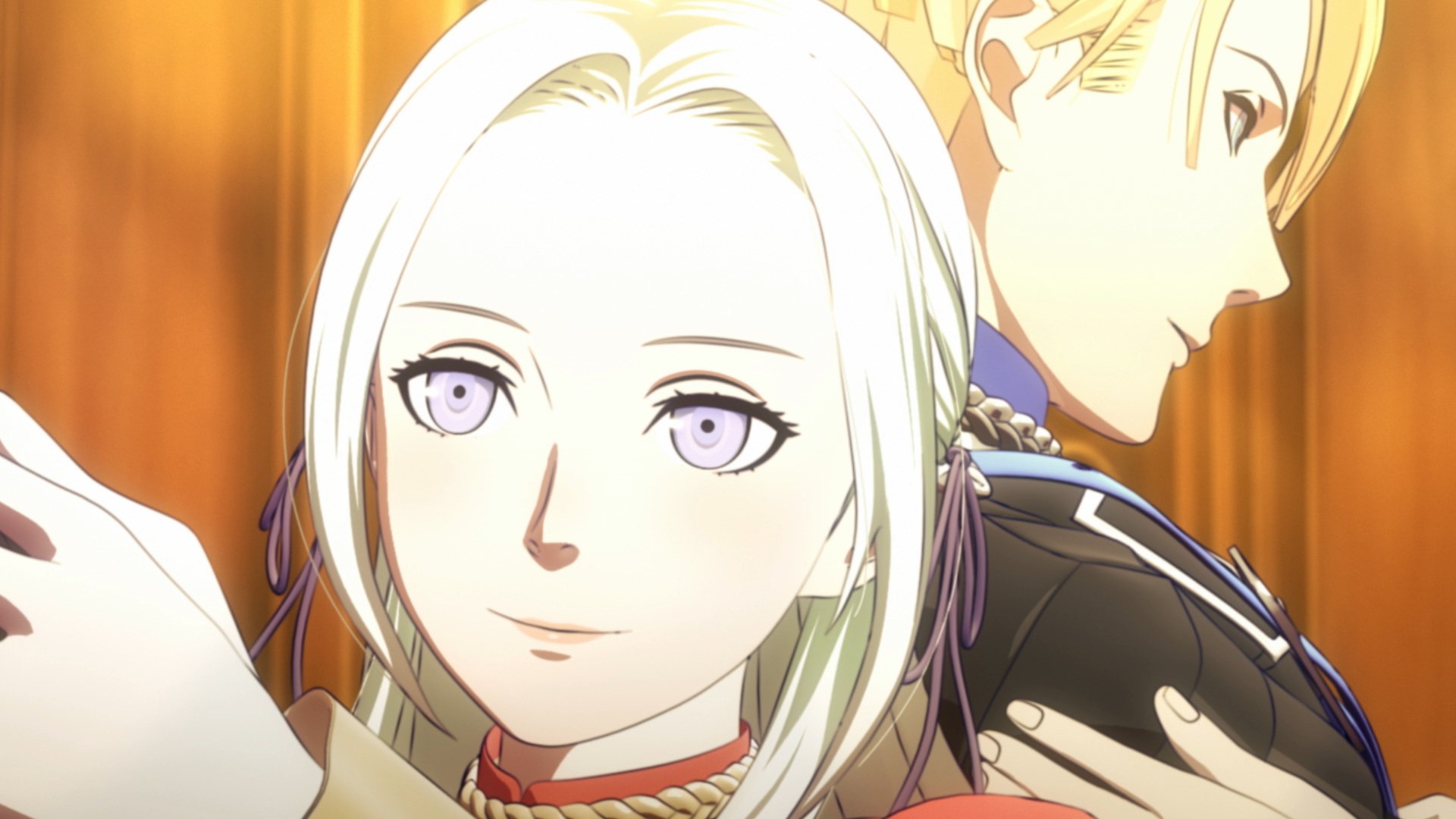
To be clear, that feeling isn’t altogether new for Fire Emblem. Despite all of the ancient dragons, holy swords, and, well, emblems imbued with the power of mystical flames, Fire Emblem is often described by listing its idiosyncrasies—permadeath, the weapons triangle, class promotions. One that rarely gets as much attention, but that is as important, is the fact that when your characters level up, their stats increase semi-randomly. Sometimes you get huge increases. Other times, a character might only get a couple of small boosts, and then deliver a resigned apology.
Because you cannot directly choose where those stat points go, Fire Emblem characters have always had a sense of independence from you. It’s a huge part of why people (like VICE Games’ own Patrick Klepek) loved Fire Emblem Awakening’s Donnel, a weak farmer boy who had a special potential for really, really good stat gains. With Three Houses, Intelligent Systems has shaped the entire game around this feeling of invested spectatorship, causing you to root for characters more than ever, both on and off the battlefield.
Key to that is the how the game capitalizes on its premise, which casts you as the newest professor at Garreg Mach Monastery, home to the setting’s massive church and the continent’s greatest military academy. After a short introduction, you choose which of the titular three houses you’ll be leading. (For the record, I sided with the Golden Deer, which is tied to aristocratic Leicester Alliance and led by the mischievous and lovable Claude.)
From there, the game is split into month-long chapters, each further split into multiple weeks and ending with a traditional Fire Emblem mission. But along the way, it’s your job to set study goals and chores for your students, join or direct them in extracurriculars like choir practice or martial tournaments, and (of course) lead them in the many side missions that open up to you. Also, if you have time, to sneak in some fishing or gardening, for fun and profit.
All of these things lead tie into some element of character growth, often in multiple ways. Weekly classes allow you to directly instruct students in battlefield skills like swordplay, horseriding, or the use of heavy armor, but you can also set goals for them to study on their own during the week. Choir practice adds to the participants’ Faith “weapon rank,” allowing them to better wield healing magic in combat, but it also boosts their relationship with you and each other. Eating a meal together heightens your social bonds, and (especially if the meal is well picked) it will also refill the motivation meter of those eating, allowing them to do more personal studying with you when the next week kicks off.
On paper this seems self-evident and, given that the bulk of these activities are driven by menus, maybe even underwhelming. But in practice, it drew me in unconditionally.
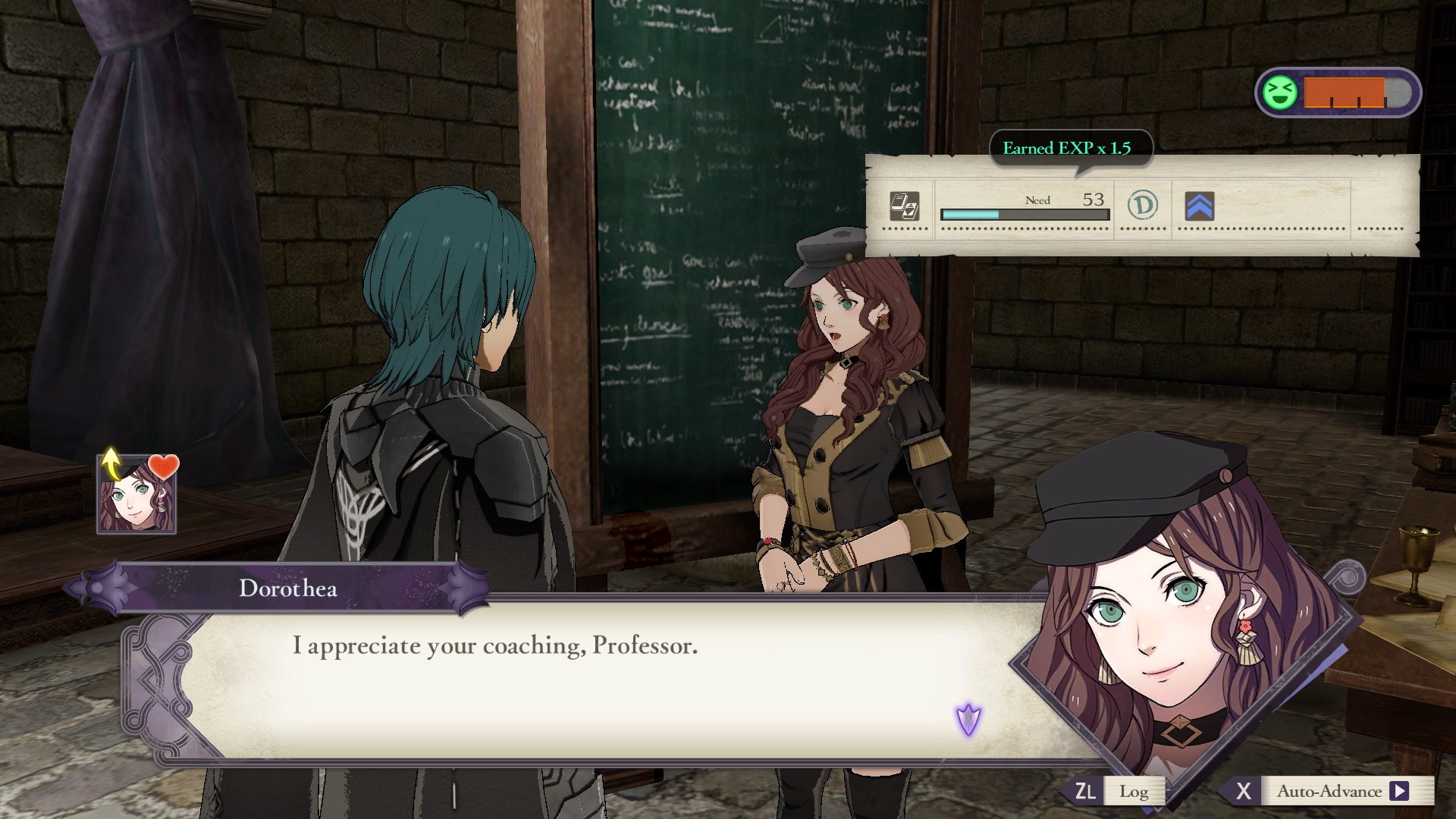
As your students skills increase, they unlock new passive and active abilities, and can eventually take certification tests to promote into new, upgraded classes. I spent week after week carefully examining my students’ current skill ranks, figuring out where their (and my) time was best spent during any given round of instruction. Besides their starting stats, each character has a number of truly unique attributes, including passive abilities, hidden potentials for skills may not obviously be good at, and the mysterious magical crests that are central to the game’s story.
While all of those factors means that some note-taking was helpful, I never felt overwhelmed by my choices. Instead, what it meant for me was that through 65 hours of play, every member of my squad felt unique when it was time to take to the battlefield.
Which is important, especially because I came into Three Houses pretty skeptical about spending so much time in Fire Emblem’s tactical battles again. I’ve been a fan of the series since its Western debut in 2003, but after bouncing off of Fates, I began to wonder if I had just gotten tired of this take on the tactical RPG formula. Thankfully, I’ve been pleasantly surprised by a number of changes that Intelligent Systems has made to the core design, especially in relation to character customization and increased transparency.
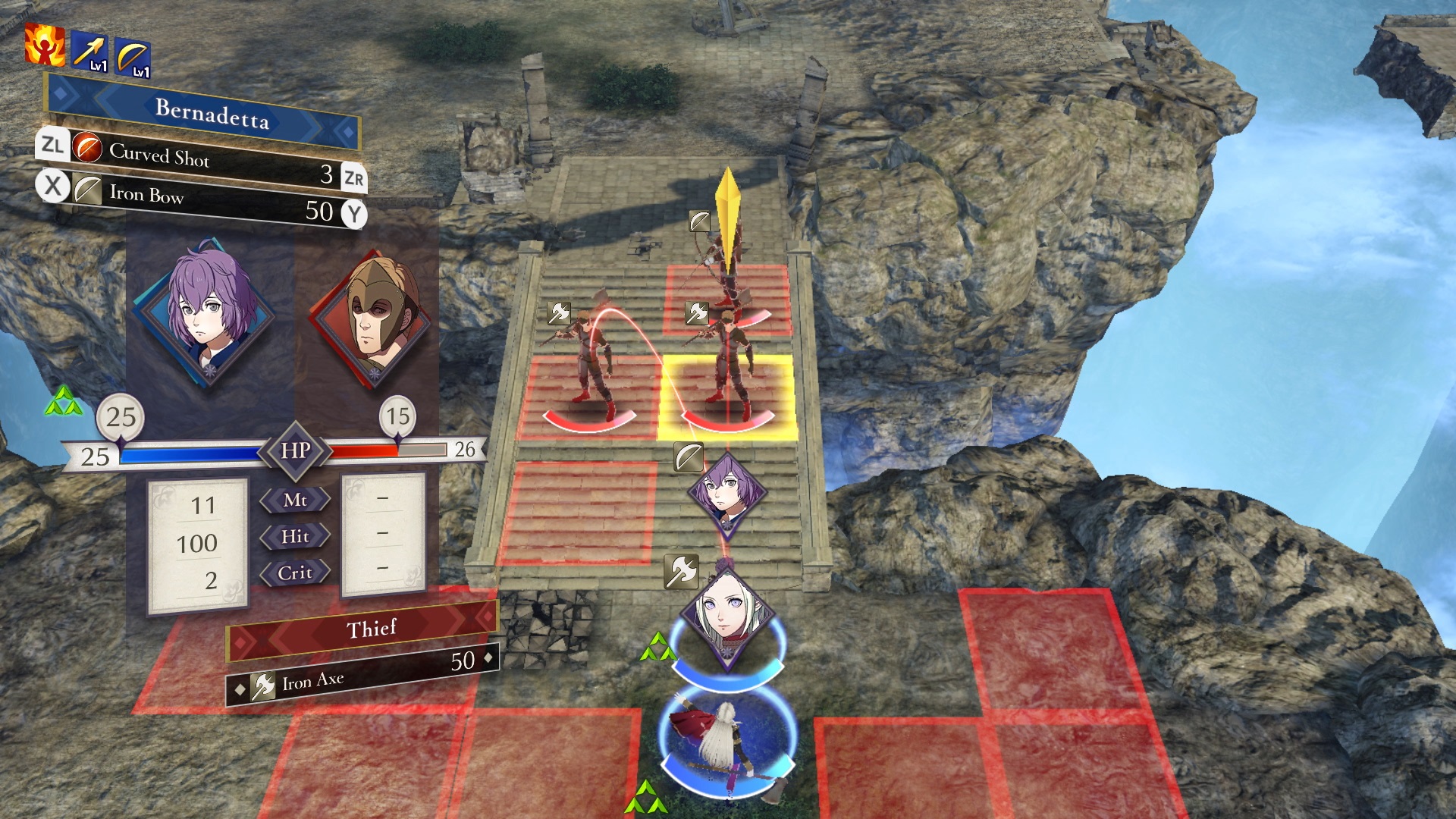
Three Houses joins recent favorites Into the Breach and Slay the Spire as a game that is perfectly happy to tell you what your enemy is going to do on their turn. Gone are the days of wondering which character a brigand is going to swing his axe at. Now, you can move your cursor over any enemy unit and see which character they’ll target on their turn, what their percentage chance to hit is, and how much damage they’ll do. As you place your units, bright red lines will draw from enemies to your character, letting you know that you’re about to move them into danger. And hey, if you make a mistake, the game lets you turn back time a limited number of times per battle, tied to an in-fiction power the protagonist develops over the course of play.
There was a time that I would have balked at that, especially since both of these features exist even in the game’s “classic,” permadeath-having difficulty mode (which I always wind up playing even though I always restart a level rather than letting someone die). But this is incredibly important to Three House’s combat design for two reasons. First, because, due to the time spent between main missions, even a single route of Three Houses is extremely long. With about 5 missions left, I’m 65 hours into my playthrough, and that includes zero restarted missions—something I would’ve done a dozen or more times by this point in past Fire Emblem games. Second, because with the changes to the series’ longstanding weapons triangle, the outcome of fights is less predictable than in previous games.
In past Fire Emblem games, learning which weapons and units were strong against each other was paramount. The old “weapon triangle” dictated that axe users had the upper hand against lance units, who in turn dealt extra damage against sword wielders, who were then best against axes. Similar relationships existed between other combat units, like archers being extra effective against flying characters. Early previews reported that the weapon triangle was gone, but in actuality, it’s been dispersed throughout the game in a much more nuanced way.

Let’s get specific: Sword wielding units, for instance, still tend to have an advantage against axes, just not because of innate damage and accuracy bonuses. Instead, those bonuses are spread across a number of factors, the first of which are raw stats In general, sword units have higher speed attributes and lightweight equipment, meaning that they’re more likely to attack multiple times in a single exchange. There are also the swords themselves, some of which carry a bonus against axes (while you won’t find lances that offer that bonus.) Skills play a roll too: As you level up a character’s sword rank and as you max out certain classes, you unlock both active and passive abilities that you can assign to that unit, including options that make them more effective against axes when wielding a sword.
What makes Three Houses special is that a unit can only carry a few of these abilities at once, and by the mid game, especially if you’ve bounced a character around between a bunch of different classes, you’ll have unlocked more of these than you can slot. At the top of every mission, your best strategy is to scan the battlefield for the enemy’s makeup and adjust from there. Sure, you’ve made the bookish Ignatz an archer, but given all those axe troops, you could find space to re-equip the Axebreaker passive on him. Or, since many of the axe troops have heavy armor, maybe the play is to give him the bow that does bonus damage to armored units.
All of this would make the old model of combat too unpredictable. But because you can now see who the enemy is targeting and how much damage they’ll likely do (barring a critical hit), the result is a combat model that feels like an improvisational puzzle box. By the mid game, as you unlock more spells, abilities, special weapons, and battalions (bodyguards with special abilities and stat bonuses who you can employ and attach to your units), you have a toybox of creative solutions to play with. It isn’t quite Into the Breach, but it does present a vision of Fire Emblem that doesn’t rely heavily on the fear of losing characters. (And for what’s it worth, most of the missions were still tense, challenging encounters that rewarded smart play.)
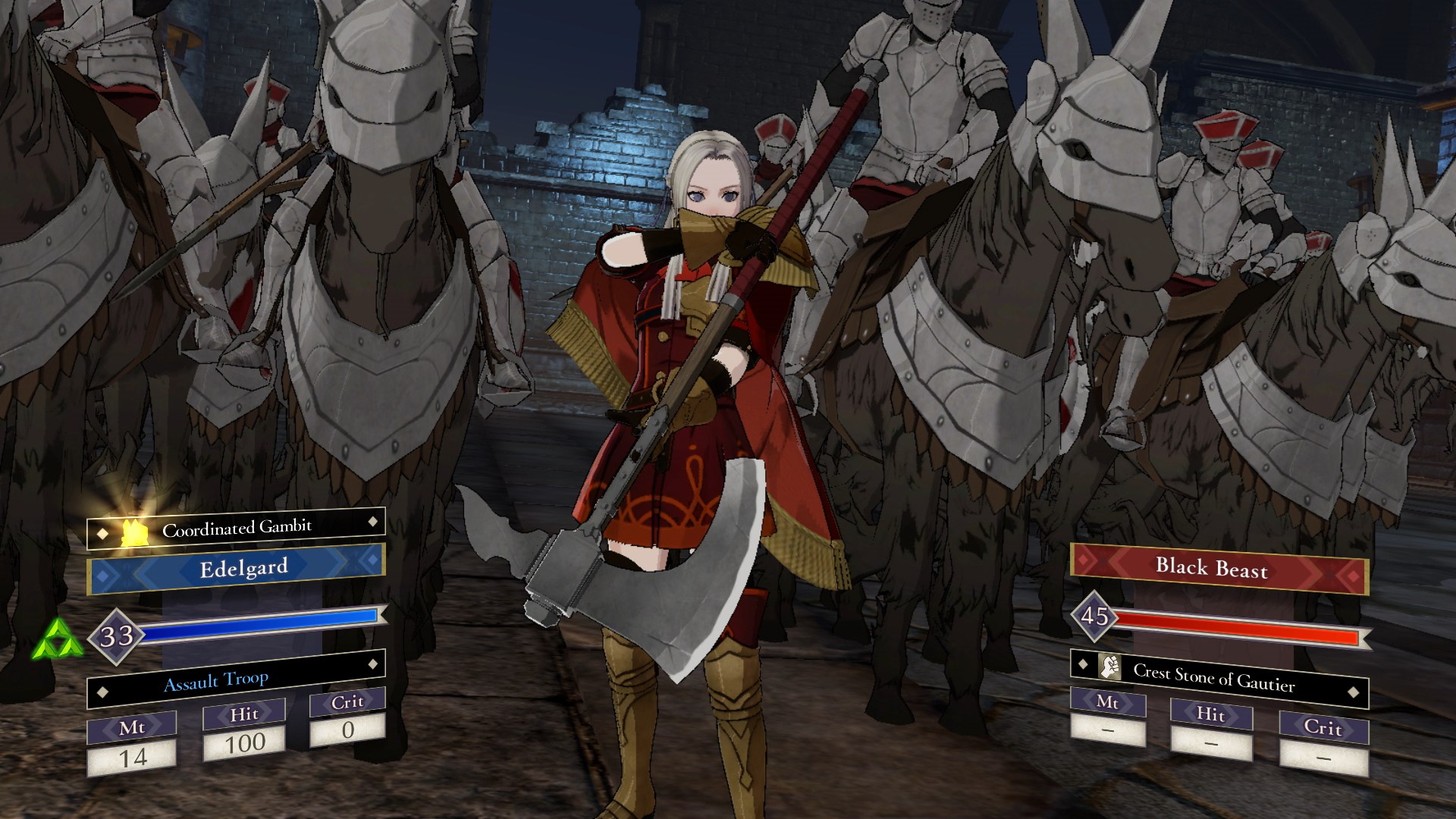
If all of that tactics stuff sounds great, but the classroom scheduling puts you off, then please know that Three Houses does offer players the option to skip all of the syllabus setting and campus exploration. But even towards the end of my time with the game, I was invested in getting the most out of my students every week. It never stopped feeling special.
In past Fire Emblem games, and in most other tactics games for that matter, the only way your characters improved was through killing on the battlefield. Here, seeing them study, practice, and just hang out breathes a feeling of life into them. You even get to know the students from the other houses, as you’re able to chat with them around campus, perform fetch quests for them, and even recruit them (temporarily or permanently) to join you for any fights you get into that month. Because of its many inhabitants, Garreg Mach Monastery had joined the ranks of Mass Effect’s Normandy or Suikoden’s many castles as a place that felt like home, filled with people that felt like friends.
And that’s how they got me. That’s how Three Houses played an unavoidable trick on me. Once Intelligent Systems knew that I cared about these people, they could break my heart with permadeath in a whole new way: by making me kill them.
As advertised at E3 this year, Three Houses is split by a five year time jump into two distinct parts. In the first, you go from month to month teaching classes, fighting bandits, and becoming increasingly aware of a mysterious conspiracy that calls just about everyone’s motives into question. Then (about 40 hours in for my Golden Deer playthrough) some dramatic revelations lead to some even more dramatic action, throwing you into a chaotic world where you will inevitably face off against former friends and acquaintances.
While plenty of games, including other Fire Emblem titles, force you to fight former friends, this normally follows an ideological break or a treacherous betrayal. While those aren’t fully absent in Three Houses, the motivation for characters to take the field against you is much more likely to be simply where they were born or which nation’s flag they already flew. Again and again, you draw weapons against people who you knew and liked back in peacetime. These are people you build in-game support levels with. Ah, yeah, I used to tease her about ghosts, you might think as she charges at you with hands ablaze. Or Oh, yeah, he was good at fishing. Now, you hope for a critical hit and an instant, so that he doesn’t even get the chance to fight back.
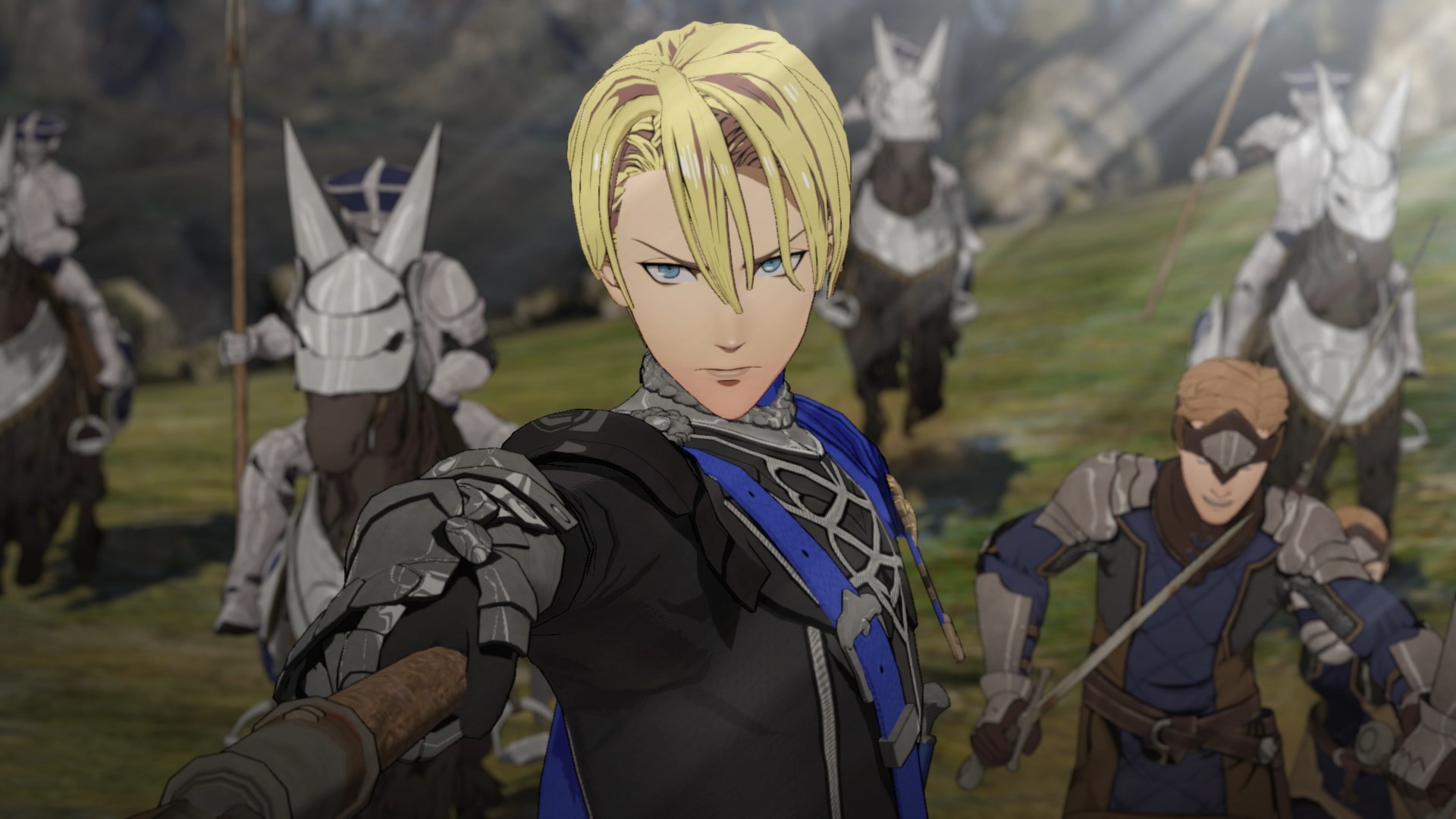
Each time this happened, I felt a pang of guilt. During the first half of the game, you can recruit characters from the other houses (permanently) by impressing them with your expertise in certain skills they care about. But back then it just wasn’t a priority for me. I recruited one person. I never even bring her on missions, but I’m glad I did.
None of this systemic angst would matter if it wasn’t paired with a scripted story I cared about. But through my 65 hours with the game, I’ve remained invested and curious. Though it is a war story and a fantasy tale, Three Houses is also something of a mystery, both mundane and mythological. Within the first few hours, key characters will begin to make you suspicious of their intentions and histories. Then, something funny happens: More characters become suspect. Everyone, it turns out, has a past. And yes, sometimes they’re actively hiding something from you, but maybe they have a good reason to be. Or, maybe they just don’t know you well enough yet.
What emerges is a story about complex people who (mostly) have good reasons for butting heads. Everyone dreams of a more perfect world, but because they’ve led different lives, they have different opinions about what “more perfect” might mean. And some differences can’t be settled in debate club.
Central to the game’s narrative conflict are major ideological differences about a wide range of political issues including faith, inequality, and even globalism. Should the church—with its vast monopoly of knowledge—be the central cultural institution? How important is a country’s “national character”? What gives the landed gentry the right to rule? This is a game that starts each of your students as one of two classes—commoner or noble—and knows that it’s doing that.
These questions linger in the lore and world building in the game's first half, and then in the second, they drive the principal players to take action, revealing their grand visions and enacting their secret schemes. Once the narrative focuses in on your faction's plans, though, the camera rarely shifts to the characters you're fighting against. That's unfortunate, as the game is at its strongest when it's able to put its big personalities in direct dialog and conflict with each other. Still, that tight focus means coming to know and love your dedicated crew of characters.
At least, that’s how it’s been as a Golden Deer player. I wish that I could tell you for sure about the game’s big thematic takeaways or final act twists, but I can’t. While a number of key mysteries have been solved in my playthrough, I suspect that some of the answers I want are in the other House's routes. Besides the fact that I still have a couple more missions to wrap up in my playthrough, Three Houses’ branched structure means that (despite being five dozen hours into it) my experience with the game remains incomplete. I also can’t speak to whether there’s any sort of “final” or “true” ending, nor can I report on the new game plus feature from first hand experience. (One thing I can say: Given how much I've enjoyed playing, I wish I had been able to play only one or two “months” at a time, like a nightly TV show, rather than cramming through a handful of super-long sessions. Don’t be like me, pace yourself!)
From briefly chatting with a few other reviewers, it sounds like there is meaningful difference in how the back half of the game wraps up for different factions, not only in terms of story beats but in terms of length and structure. I can’t vouch for those claims, but this is part of the dilemma of reviewing a game that is an estimated 70+ hours long.
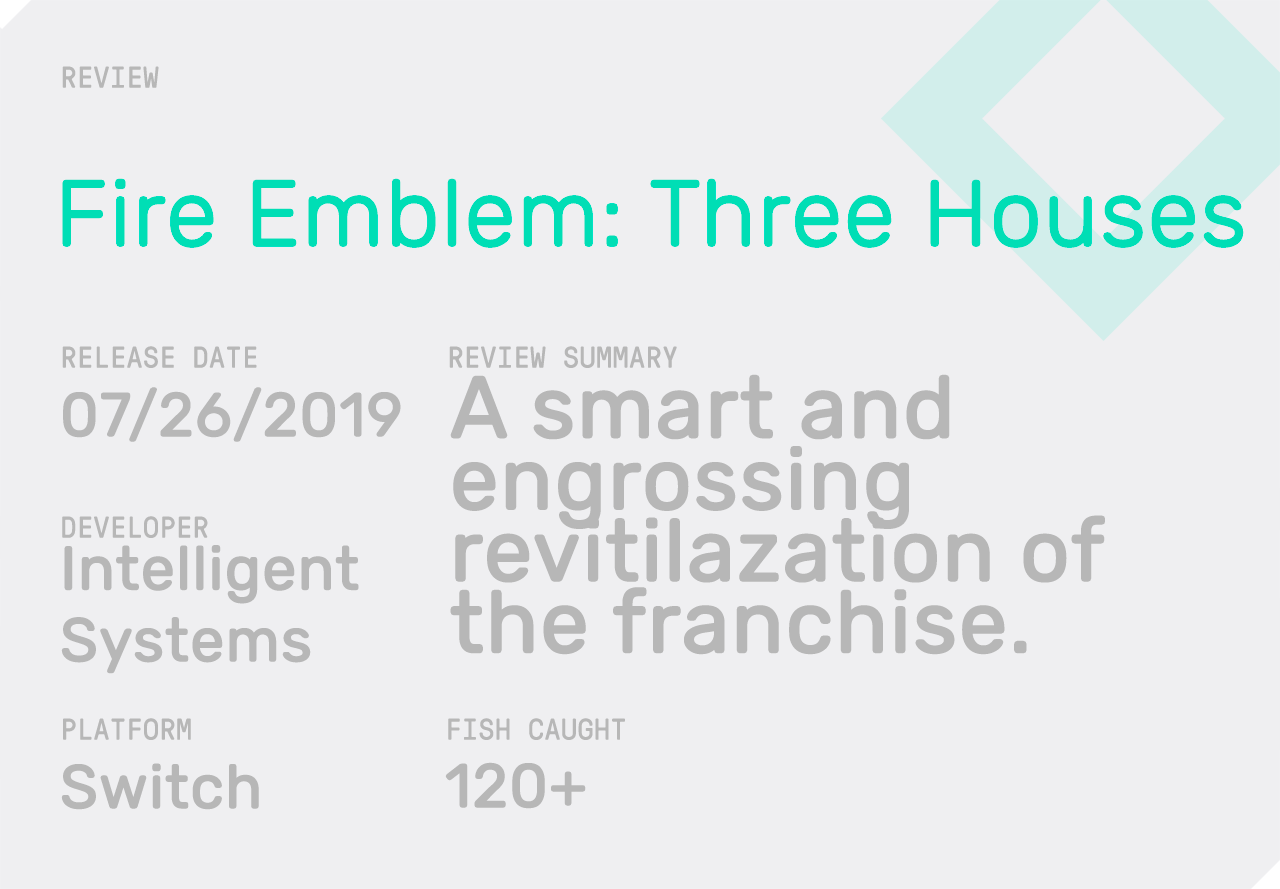
Another thing I can’t yet vouch for is how Three Houses handles queer content, which is a concern not only for the normal reasons, but because of the series’ own troubled history with gay characters and Nintendo’s attempts to improve representation of queer characters in past localizations. Leaks and rumors indicate that there are a handful of queer women available to for players to romance, but only one bi male option.
Part of why it’s hard to speak to this is because, while Support conversations have returned, the child system that dominated Awakening and Fates does not. The “S” rank support tier only exists for the player’s character, and that cannot be met until the very end of the game, beyond even my 65 hours. There is still plenty of platonic and even flirty fraternization available between most of your crew. (It’s worth noting, I saw nothing resembling flirting between these students and my main character until after the time jump, which not only brings their ages up but also situates them as adult peers instead of pupils.)
This shift away from the generational system of the Awakening and Fates, and towards a more robust take on character development that takes notes from influences as diverse as Final Fantasy Tactics and Princess Maker, should not be undersold. Stepping away from that design, instead of simply making it shine bright on the big screen thanks to the Switch, is fundamentally a risky move. But I also think it’s a smart one.
In 2012, Fire Emblem Awakening seemed to breathe new life into the series, introducing new players not only to Fire Emblem but to the genre, too. It seemed to indicate a second chance for the franchise, but what followed mostly left me less interested than I’d been in past entries. Now, seven years later, at the end of a decade filled with incredible tactics games, I’m pleased to see Nintendo refresh the series once again, this time with a whole new generation in mind.
Have thoughts? Swing by the Waypoint forums to share them!
from VICE https://ift.tt/2LJ0iM2
via cheap web hosting
No comments:
Post a Comment